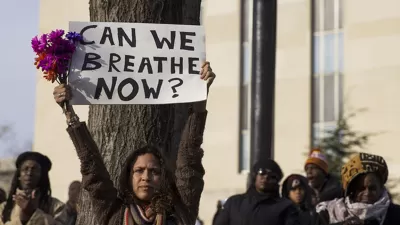If planners want to address the impacts of exclusionary planning, historical inequities, and policies that ignore the needs of women and minorities, they must address systemic inequities within the field itself.

Despite their high rate of participation in civic life (more than twice as high as the general population) and strong presence in community meetings and organizations, Black women are still vastly underrepresented in the urban planning field. Until the profession diversifies internally, policy decisions will continue to overlook underrepresented communities.
It's no question that women have made significant gains in the planning profession in recent years, but the growth hasn't been uniform, with the transportation, design, and engineering subfields still skewing heavily toward male planners. While women now make up almost half of the American planning workforce, Black women only comprise 3% of professional planners, and the percentage of planning degrees awarded to Black graduates is stagnant.
At the core of the need for more diverse planning departments is trust. In order to even engage with public processes—often confusing and inaccessible—communities have to feel that their voices will be "championed by trustworthy agents within the system" that are working for their goals.
A good start, writes Lindiwe Rennert, is to recognize the important community-building work that Black women without formal training do. "Black women have been doing planning work without academia accredited planning training since the concept of planning was birthed," she says. Now it's time to value it.
FULL STORY: Black Women in Planning: Where Are We?

Alabama: Trump Terminates Settlements for Black Communities Harmed By Raw Sewage
Trump deemed the landmark civil rights agreement “illegal DEI and environmental justice policy.”

Planetizen Federal Action Tracker
A weekly monitor of how Trump’s orders and actions are impacting planners and planning in America.

Why Should We Subsidize Public Transportation?
Many public transit agencies face financial stress due to rising costs, declining fare revenue, and declining subsidies. Transit advocates must provide a strong business case for increasing public transit funding.

Understanding Road Diets
An explainer from Momentum highlights the advantages of reducing vehicle lanes in favor of more bike, transit, and pedestrian infrastructure.

New California Law Regulates Warehouse Pollution
A new law tightens building and emissions regulations for large distribution warehouses to mitigate air pollution and traffic in surrounding communities.

Phoenix Announces Opening Date for Light Rail Extension
The South Central extension will connect South Phoenix to downtown and other major hubs starting on June 7.
Urban Design for Planners 1: Software Tools
This six-course series explores essential urban design concepts using open source software and equips planners with the tools they need to participate fully in the urban design process.
Planning for Universal Design
Learn the tools for implementing Universal Design in planning regulations.
Caltrans
Smith Gee Studio
Institute for Housing and Urban Development Studies (IHS)
City of Grandview
Harvard GSD Executive Education
Toledo-Lucas County Plan Commissions
Salt Lake City
NYU Wagner Graduate School of Public Service





























